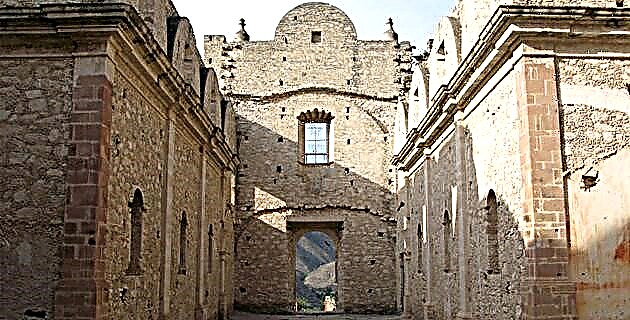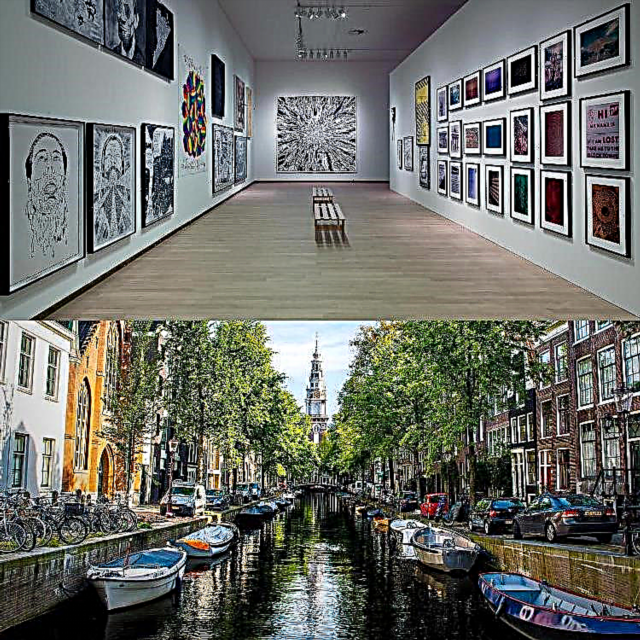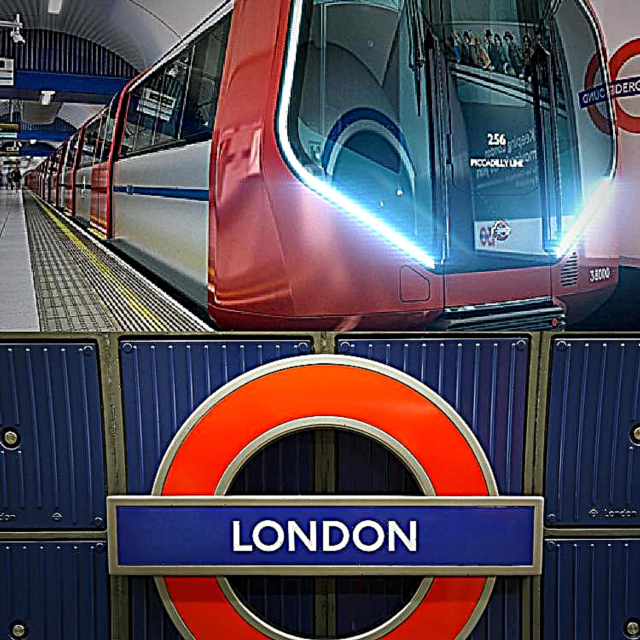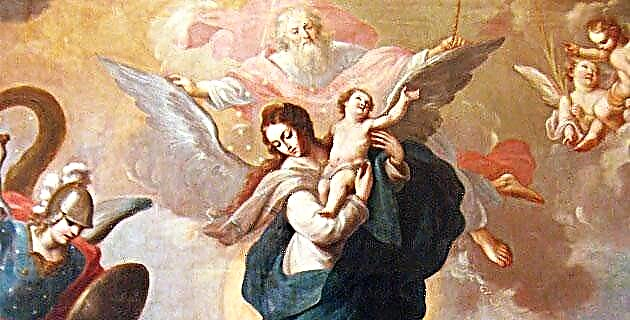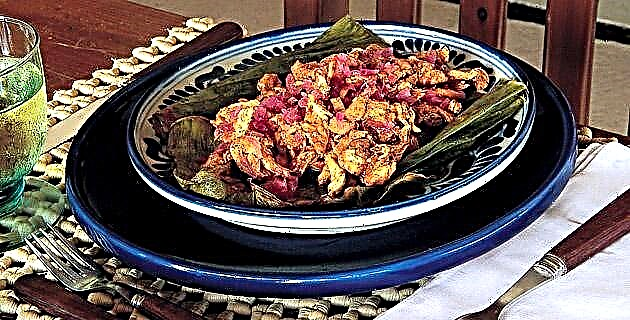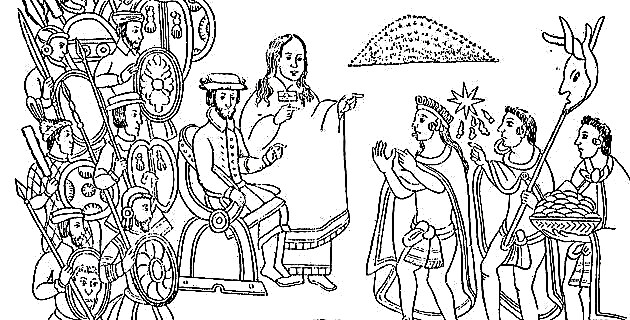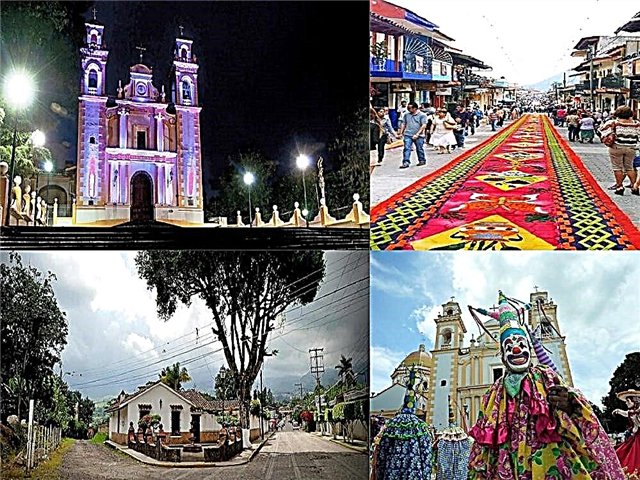In the middle of the Sierra Madre Oriental, with the aroma of good coffee, Xico waits for visitors to give them a taste of its delicious food, while they enjoy its festivals, admire its attractive buildings and visit its unique museums. Get to know Xico fully with this complete guide to this Magic Town.
1. Where is Xico located?
Xico is the head of the Veracruz municipality of the same name, located in the central-western zone of the long and thin Mexican state. The municipality is adjacent to the Veracruz municipal entities of Coatepec, Ayahualulco and Perote. Xico is 23 km away. from Xalapa on state highway 7, while the city of Veracruz is 125 km away. Other cities near Xico are Orizaba (141 km.), Puebla (195 km.), And Pachuca (300 km.) Mexico City is located 318 km from the Magic Town.
2. How did the town arise and evolve?
The pre-Hispanic indigenous people called the place "Xicochimalco", which means "Nest of jicotes" in the Nahua language. The Spanish conquerors arrived early in the port of Veracruz and also in Xicochimalco. In 1540 the Franciscan evangelizers arrived and drew up the new town of Xico a few kilometers from the old settlement and the colonial city began to form. Xico suffered centuries of isolation and its main contact with the rest of the world until the 20th century was the railroad to Xalapa. The first asphalt road, the road to Coatepec, was built in 1942. In 1956, Xico was elevated to a municipality and in 2011 it was declared a Magic Town to enhance the tourist use of its historical, architectural, culinary and spiritual heritage.
3. How is the climate of Xico?
Xico enjoys a cool climate, being nestled in the Sierra Madre Oriental, 1,286 meters above sea level. The average annual temperature in the Pueblo Mágico is 19 ° C, which rises to 21 ° C in the summer months and drops to 15 or 16 ° C in the winter. There are not too extreme temperatures in Xico, since the maximum heats do not exceed 28 ° C, while in the coldest moments they reach 10 or 11 ° C. The rainy season runs from June to November, although it can also rain in May and October and a little less in the remaining months.
4. What are the main attractions of Xico?
In the architectural landscape of Xico, the Plaza de los Portales, the Temple of Santa María Magdalena, the Capilla del Llanito, the Old Railway Station and the Old Bridge stand out. Two striking exhibitions that you must know are those of the Dress Museum and the Totomoxtle Museum. Nearby are Xico Viejo, Cerro del Acatepetl and some beautiful waterfalls. Xico has two gastronomic symbols that you cannot stop tasting in the Magic Town: the Xonequi and the Mole Xiqueño. The best month to go to Xico is July, all of festivals in honor of Santa María Magdalena, with alleyways, decorated streets and the Xiqueñada, a peculiar bullfighting show.
5. What's in the Plaza de los Portales?
The Plaza de los Portales de Xico makes you feel as if the time machine had transported you to the center of a Veracruz city during the 18th century, in the middle of the viceregal era, with its cobbled pavements and cozy colonial houses with arched portals. It was built between the 18th and 19th centuries, and it has an Art Deco style gazebo in the center that does not break the viceregal charm. In his time, the square between Zaragoza and Abasolo streets was the place of the market. From the square you can see the silhouette of the Cofre de Perote or Nauhcampatépetl, an extinct volcano at 4,200 meters above sea level, which is the eighth highest mountain in Mexico.
6. What is the Temple of Santa María Magdalena like?
The construction of this temple with a neoclassical façade located on Calle Hidalgo, between Calle Juárez and Lerdo, was carried out between the 16th and 19th centuries. The entrance to the church is accessed through a staircase of two dozen steps and has two twin towers and monumental domes that were added in the 18th century. Inside the temple, the image of Santa María Magdalena, patron saint of the town, stands out, located below the figure of the crucified Christ that presides over the main altar. Likewise, the baroque windows and other beautiful religious sculptures preserved inside are distinguished.
7. What is exhibited at the Museo del Garment?
Next to the temple of Santa María Magdalena, in the so-called Patio de las Palomas, there is a building attached to the parish, which houses the curious and interesting Museum of Clothing. The sample contains more than 400 costumes that have been worn by the patron saint throughout the church's existence. As the available space is not very large, only part of the collection is on display. The vast majority of the costumes, splendidly embroidered and very elegant, have been gifted to Saint Mary Magdalene by grateful faithful. Open from Tuesday to Sunday.
8. What is shown in the Totomoxtle Museum?
This cute little museum displays pretty figurines made from corn husks. Its owner and guide is the owner of the house, Mrs. Socorro Pozo Soto, who has been making her beautiful pieces for almost 40 years. There you will be able to admire different traditional and popular prints of the local, Veracruz and Mexican culture, such as a bullfight with a plaza, public, bull-horned and matador. You will also be able to see in miniature the Portals of the town, a mariachi, the procession of Santa María Magdalena and scenes of people working, such as a cook at a street stall and a fruit seller. It is located at Ignacio Aldama 102 and admission is free, but you can buy a beautiful figurine as a souvenir.
9. What is the interest of the Old Railway Station?
During the Porfiriato Era, Mexican rail transport had a great boost and the Xalapa-Xico-Teocelo route linked the Magic Town with the capital of Veracruz, facilitating the movement of people and coffee and other agricultural and industrial products to and from Xico. The old house that served as Xico's railway station is now a private residence that was remodeled, with a square in front, which can be visited by tourists. It is located on Ignacio Zaragoza street, on the road that goes to the Texolo waterfall.
10. What is the Capilla del Llanito like?
Between Ignacio Zaragoza and Mariano Matamoros streets is this beautiful chapel built in the 18th century, which has its facade crowned with an open bell tower. The chapel was consecrated to the Holy Cross and the image of the Miraculous Child of the Llanito and a replica of Saint Mary Magdalene are preserved inside. The chapel is the scene of two popular religious festivities: the Cruz de Mayo festivities and the Procession of Silence on Good Friday, which after leaving the small temple, runs along Calle Hidalgo and ends at the parish church.
11. Are there other places of architectural interest in the town?

The Old Bridge is a sturdy and simple 19th century construction surrounded by the enchanting landscapes that characterize Xico. It is located near the attractive Capilla del Llanito on the road that goes to the community of Rodríguez Clara. The bridge is part of the route that many pedestrians and cyclists use for their walks, and it is also known by the name of "pussycat on the train." Another place of interest is the Plazoleta del Tío Polín, located between Josefa O. de Domínguez and Los Campos streets, which has a stone that according to tradition was used for sacrifices.
12. What is Xico Viejo?
Old Xico is a small town of about 500 inhabitants that is located about 4 km. from the municipal seat. During the early days of the colony, there was a fortress in Xico Viejo built by Cortés's men on their way from Veracruz to Tenochtitlán. In the surroundings there are archaeological testimonies that have not yet been explored and studied in depth. In the town there are several rainbow trout farms that feed the growing demand for this fish in nearby cities and some cabins for a deeply peaceful stay in intimate contact with nature.
13. What are the main waterfalls?
The Cascada de Texolo is a stepped waterfall 80 meters in length that has three viewpoints to admire the stream integrated into the beautiful landscape. In the place there are two bridges, one in use and another whose structure was bent by a seismic movement. Rappelling fans practice their exciting sport and if you want to reach the stream, you must descend a ladder of 365 steps. Another beautiful waterfall in Xico is the Cascada de la Monja, which is 500 meters from the previous one and forms a pool of fresh waters in which you can take a delicious bath. The path between the two waterfalls is lined with coffee trees.
14. What can I do at Cerro del Acatepetl?
The natural emblem of Xico is this pyramidal hill visible from anywhere in the town and which is also known by the names of Acamalin and San Marcos. It is covered with trees whose foliage protects the coffee plants. It is frequented for hiking and biodiversity observers visit it, especially for its bird species. Around the Acamalin there is an ancient legend; the peasants who work in their skirts say they occasionally hear songs and prayers from the fairies that inhabit the place, causing them severe chills. To go to Acamalin you have to take the same route as the Cascada de Texolo.
15. How is the artisan work in Xico?

The coffee plantations of its mountains not only give Xico the prodigious grain to make the aromatic drink; They also provide raw material to work one of their craft lines. From the roots and branches of coffee bushes and larger trees, local craftsmen make beautiful ornaments, fruit bowls, masks and other items. The most popular wooden mask is that of Santa María Magdalena and during the patron saint festivities different versions are seen, including that of the virgin with a charro hat. They also make bamboo furniture, leather accessories, and pottery.
16. What are the main dishes of the local cuisine?
One of the culinary symbols of Xico is Xonequi, a dish native to the town. In the mountains of Xico, a plant with heart-shaped leaves that the locals call xonequi grows wild. The cooks of Xico prepare their black beans with this leaf, discarding the use of aromatic herbs, but completing the delicious soup with some balls of dough. Another gastronomic emblem of the Magic Town of Veracruz is a local mole, which is prepared according to the recipe designed almost 40 years ago by Doña Carolina Suárez. This mole became so much in demand that the Mole Xiqueño company, founded for its production, already manufactures almost half a million kilos a year. As a good Veracruz, Xico's coffee is excellent.
17. What are the main popular festivals?
The whole month of July is a festival, in honor of the patron saint, Santa María Magdalena. The processions begin on the very first of July, with the streets decked out with painted sawdust rugs and flower arrangements, amid fireworks, music rides, dances and all the other diversions of the Mexican fairs. Every year the Virgin unveils a new costume, given as a gift by a local family and one of the festive events is to "watch the dress" during July nights at the donors' house. Other traditions around the Magdalena festivities are floral arches and bullfighting shows, particularly the Xiqueñada.
18. What are the rugs and the floral bow like?
The main street of Xico, between the entrance of the town and the parish church, is lined with a colorful sawdust carpet where the Virgin will pass in procession. The making of this rug during the hours prior to its use is enthusiastically witnessed by locals and tourists. Another beautiful tradition is the making of the floral arch given to Santa María Magdalena. The residents responsible for making the arch are organized into groups and while some go to the mountains to look for the lianas or lianas that will be used to make the framework, others go to the surroundings of the Alchichica lagoon to collect teaspoon flowers for decoration. .
19. What is the Xiqueñada?
The Xiqueñada is an event similar to the Sanfermines of Pamplona, Spain, and the Huamantlada of Tlaxcala, in Mexico. Every July 22, within the framework of the patron saint festivities, the main street Miguel Hidalgo is turned into a confinement in which several fighting bulls are released that are fought by spontaneous ones who throw themselves to exercise their bullfighting skills in search of a little of adrenaline. Although the public is placed behind barriers, the show carries its risks, so you must take the necessary precautions. For the occasion, some families decorate their houses with bullfighting motifs and many pasodobles are heard, the emblematic music of the brave festival.
20. What are the main hotels?
At km. 1 of the road to Xico Viejo are the Cabañas La Chicharra, a beautiful place with perfectly manicured lawns and clean and comfortable units. Near the lodge there are trout farms where you can buy some beautiful specimens to prepare them on the grill of the cabin. Hotel Paraje Coyopolan is on Carranza street near the stream, the ideal accommodation for those who like to sleep lulled by the sound of water. The Hotel Real de Xico is located on Calle Vicente Guerrero 148, a recommended accommodation for visitors with a vehicle who go to the patron saint festivities, since it has a large parking lot. You can also stay at Posada Los Naranjos and Hotel Hacienda Xico Inn.
21. Where can I go to eat?
If you fancy typical food, you should go to El Mesón Xiqueño, on Avenida Hidalgo 148. It is a pleasant place that offers the culinary specialties of the town, the Xiqueño and Xonequi mole. Los Portales Restaurant is also on the main avenue (Hidalgo), it offers the best view of the historic center of Xico and the food is delicious. El Acamalin and El Campanario de Xico also have local specialties on the menu. In all of them you can enjoy the aromatic coffee harvested in the foothills of the town's mountains.
Has your appetite been whetted and are you ready to go taste Xico's delicacies and discover its charming attractions? We wish you a happy trip to the Magic Town of Veracruz.

